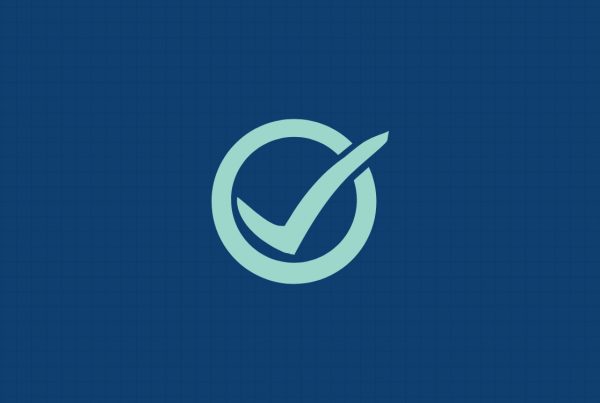Market manipulation schemes can subject financial firms to enormous penalties and, in some cases, tear down the enterprise altogether. How can executives protect against the outsized harm of market manipulation?
—
There’s a recurrent nightmare shared by many compliance officers.
It involves as little as a single rogue trader secretly conspiring with peers at other firms over an encrypted channel like WhatsApp or ProtonMail to manipulate interest rates, or energy prices, or one of the many other trading markets.
Schemes like these can result in catastrophic consequences — both monetary and reputational. Because they often originate from a single point of weakness – an unscrupulous employee – they can also be very difficult to spot before they blow up.
The Problem? Schemesters are Evolving
The Securities and Exchange Commission (SEC) reports that market manipulation enforcement actions comprised 7% of the cases it brought in FY2018, down slightly from 9% in FY2017. That may seem like a relatively small percentage, but it’s not wholly surprising considering that market manipulation requires a degree of coordination and malice beyond that of simply trading on inside information or including misleading information in an offering document.
What tends to trouble compliance officers is not necessarily the volume of market manipulation schemes but, rather, their potentially large impact on a firm’s bottom line and their increasing variety and computer-aided sophistication. In one annual report, the SEC reflected on how technology has emboldened market manipulators and other wrongdoers:
Just a few years ago, it was difficult to imagine a market manipulation scheme accomplished by hacking into the electronic accounts of others and then forcing trades to pump up on a stock price. Or the brokering of stolen inside information on the so-called ‘dark web,’ paid for in untraceable cryptocurrency. Yet these are the sort of schemes we now frequently encounter.” – Stephanie Avakian & Steven Peikin, SEC Division of Enforcement Co-Directors
Other schemes the SEC has pursued in the past two years include traders manipulating markets by spreading false information via social media, manipulating stock prices through false regulatory filings, and engaging in a variety of pump-and-dump schemes involving misleading press releases timed to coincide with long and short trades.
These challenges do not just bedevil the SEC — they also keep compliance officers up at night. How can firms build a bulwark against this sort of misbehavior by a rogue employee?
Read More: 2021 SEC Priorities – Cryptocurrency Regulation and a Changing of the Guard
Mandatory Leave
Forcing employees to take periodic breaks from work and their access to trading and account tools can both interrupt a market manipulation scheme and help to reveal it.
The thinking goes that a scheme requiring constant attention from the wrongdoing employee will falter if he is forced to take time away from it. An interruption in market manipulation tactics may also generate noticeable changes in trading activity that clue compliance offices in to the existence of the scheme.
Still, compliance officers are right to worry that savvy, clever manipulators may plan their schemes around vacation time to avoid detection. That is why some firms consider taking it a step further and institute a randomized and unannounced mandatory leave policy, such that rogue traders do not know when they might lose access to accounts and facilities necessary to keep their scheme running.
This may seem drastic, but sometimes the only way to catch someone in the act is to utilize the element of surprise, much like unannounced regulatory examinations that regulators sometimes conduct when they receive a tip from a whistleblower. Although this may put a damper on some trading strategies, it’s pennies on the dollar compared to the 7, 8, 9, or even 10-digit fine that your firm could incur from regulatory penalties.
Enforce Strong Controls and Immediate Follow Up
One often fail-safe way to avoid the more common market manipulation schemes is to adopt controls around the types of markets your firm will trade in. The market in thinly-traded “penny” stocks, for instance, provides fertile ground for manipulative activity. Banning your employees from dipping their toe into that and similar markets can head problems off before they ever begin.
A commonly overlooked control is to impose a ban on the use of communications channels not monitored by the firm. This can close off any secretive communications between co-conspirators. Although it is difficult to outright prevent an employee from using outside communication mediums, imposing an official ban can often make an employee think twice before engaging in these types of activities. In the unfortunate occurrence that your compliance team does spot an anomaly, it is also critically important to follow up immediately.
Read More: How to Instill a Vigorous Culture of Compliance
Share War Stories
One reason the SEC publishes details about the schemes it uncovers is to alert market participants to emerging dangers. By the same token, compliance officers can harness the knowledge of their peers by attending industry conferences like ACAMS-sponsored events and sharing details of schemes they have uncovered or suspected.
Read More: The Ultimate List of Compliance Conferences and Events [Updated 2021]
Harness Big Data and RegTech
Market manipulation schemes rely, in part, on wrongdoers’ ability to hide tiny droplets of market-moving information within the torrent of trading data that firms generate and process daily. In yesteryear, these droplets could be almost impossible to detect, but that is no longer the case. Today, a compliance team familiar with big data and equipped with the right tools with which to parse it can spot anomalies and red flags with surprising consistency.
There are many RegTech providers that can help by arming a compliance officer with AI-driven data about the firm’s, and even an individual employee’s, historical trading patterns and how particular trades deviated from the norm (See Deloitte’s list of RegTech solutions, including those that help with surveillance and trade monitoring).
With this information in hand, compliance officers can assess whether a trader’s explanation of the logic behind a position sounds legitimate or suspicious. That same information can also be reliable raw material for self-reporting suspicious activity to market regulators.
Know Your Requirements
To start with, firms need to understand and stay on top of how regulations define permissible and impermissible trading behaviors. Ascent is a regulatory knowledge solution that uses AI to help compliance teams understand exactly what their traders can and cannot do, and what their requirements/obligations as compliance officers are to monitor trading activity.
Read More: What are ‘granular’ obligations and how do they reduce your risk?
Once a compliance team has clarity on its obligations, it can also equip itself with compliance solutions that screen data for anomalous activity. As AI-powered data analysis becomes more sophisticated, these solutions can learn from your firm’s historical trading patterns to identify anything that seems out of the ordinary.
Like it or not, compliance officers are in the business of private law enforcement. Just as information sharing among governmental investigative agencies helps uncover plots, so too can talking shop with a compliance executive at a peer firm help you protect against market manipulation within your organization.
Enjoy this article? Subscribe to receive helpful content designed to help you stay at the forefront of compliance and technology.







